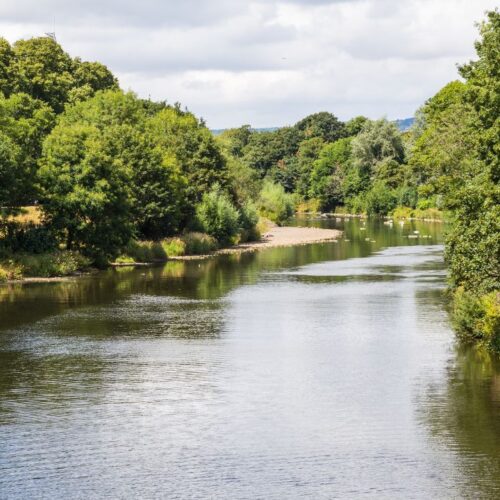This article describes what wetland hydrological monitoring is, why it is important and some of the key considerations in implementing monitoring in wetland environments to ensure it is a success.
Wetlands are an important functional element of our landscape. The term covers a range of habitats that are permanently, seasonally or occasionally inundated. The hydrology has an impact on the ecological processes, resulting in a specific species composition.
What is hydrological monitoring?
Hydrological monitoring in a wetland environment involves observing and recording water levels across the site, with a view to using the data to understand how the wetland hydrology functions.
Dependent on the project brief, it can be important to monitor the wetland over a sufficiently long time to understand its behaviour in different conditions, including through significant drought events and under flood conditions. At the very least a monitoring period should encompass all four seasons for understanding a good range of hydrological conditions.
Wetlands react to prevailing conditions, and many wetland systems may have water levels either below or above ground for some or all of the year. This diversity and range of systems is one of the wonders of wetland systems.
It may be useful for some sites to have flow measurement (as opposed to just level) at the inflow or outflow points from a site. Measuring flow can always be achieved, but is much more technically demanding, requires more resource and can be expensive.
Why is wetland hydrological monitoring important?
Wetlands are under threat from a range of human induced pressures and therefore understanding their ecology and hydrology is critical to ensuring they are managed correctly.
There is a well-established and strong link between hydrology and the ecology of wetland sites. This is because the range of plants which form the basis of a wetland have varying water level requirements. For example, reedbed or fen habitat – which includes plants such as common reed – require relatively high water levels, whilst nettles and scrub can start to encroach as a site dries out.
Intervention, such as raising water levels, may be required to improve a site’s habitat or to prevent deterioration. Only when a wetland’s hydrology is fully understood can it be effectively managed, or satisfaction achieved that there is stability in ecological status. Wetlands are usually transitional habitats and so require management to prevent change.
Clearly there is a continuum of complexities in the hydrology of wetland systems, and some may be very simple. A spring-fed fen can be simplistic and not require management. Yet a lowland wet meadow may have different hydrological different inputs from fluvial flooding, groundwater discharges and artificial input from management regimes. If a site is complex or and has very specific target water levels to facilitate a certain habitat type, simplistic management may not be successful. Inflows are often from a combination of surface water and groundwater systems and these must be understood before they can be effectively managed.
5 key considerations for effective wetland monitoring
Collecting good quality water level data in wetland environments is not easy, but it is critical to do it properly. Important elements that ensure success follow.
- Network design: Positioning of wells is critical to make sure the data are of maximum utility, especially when their number is limited by project cost constraints. This takes experience and should build upon any existing understanding of the system functioning, ensuring critical areas of the site are subject to monitoring.
- Monitoring: Ensuring a frequency of monitoring appropriate to both the system you are investigating, and the desired project outcomes is really important. Often this involves working with local partners to increase the frequency of manual measurements. The use of data loggers can significantly improve the sampling rate and therefore the clarification of hydrological processes occurring.
- Anchoring: the soil profile (and wells) can move vertically in dynamic wetland environments with expansion and contraction from being wet and dry, or even floating. Monitoring wells may therefore require anchoring to prevent them from moving and thus undermining any water level measurements that will be taken relative to the well top. This ensures data quality.
- Levelling: A level survey is required to enable a comparison of water level data between different wells. This allows the dynamics of the wetland environment to be understood once the data are processed. Dependent on the site and the project brief this may be just using a local relative survey across the site, but high accuracy differential GPS may be beneficial. Post-processing of raw data to account for the level survey ensures the data are fit for purpose.
- Data processing: Good quality-assurance of the data is critical. Experience ensures this is done effectively to avoid a variety of potential pitfalls. The post-processing of logged data requires good data management and incorporating an assessment of atmospheric pressure which will affect the water level records. The interpretation of the data for developing the understanding of how the wetland site is functioning is critical for improving the site management.
How Thomson can help
Our Freshwater team are experts in wetland hydrological monitoring and developing a solid understanding of how a wetland system works. This in turn allows effective habitat management for conservation, water quality treatment or even local amenity. Contact us to discuss what would benefit your sites.











